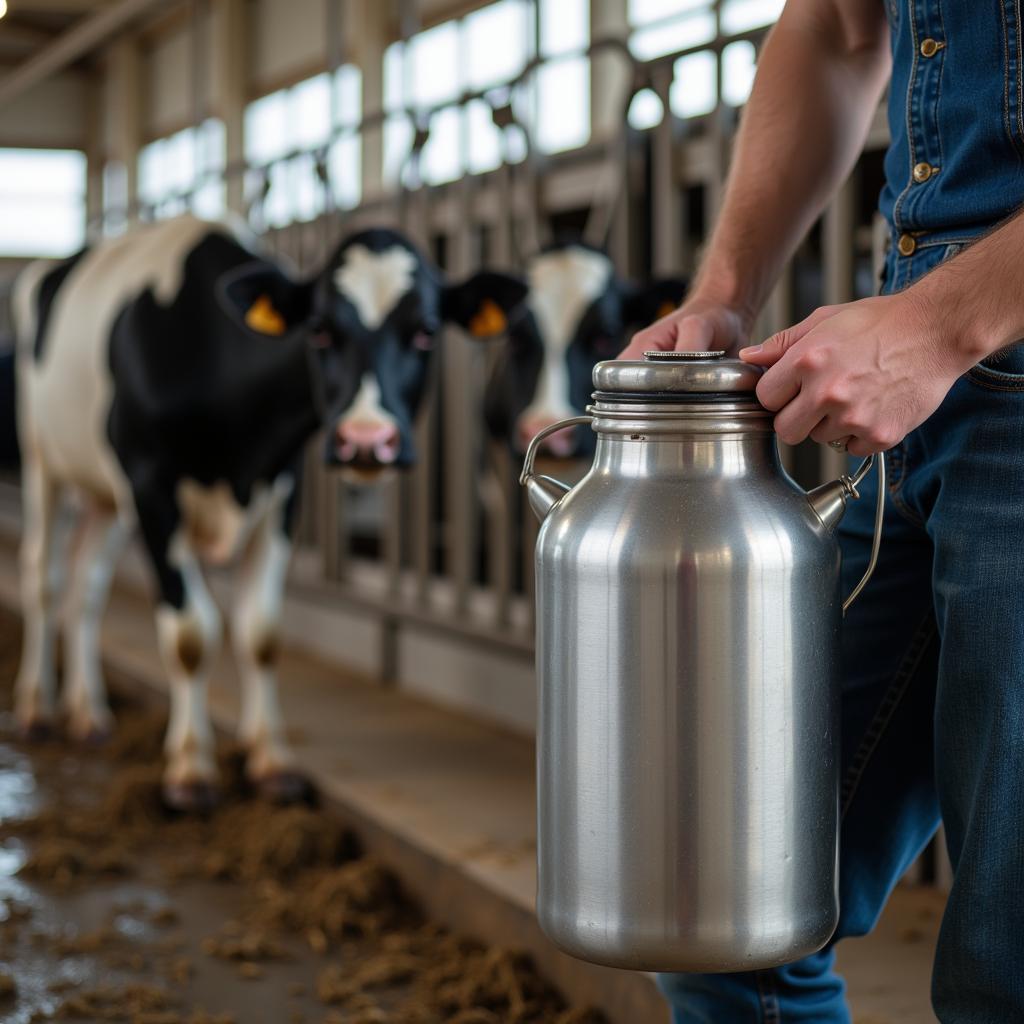Milking Buckets with Lids: The Udderly Essential Guide
October 28, 2024Milking buckets with lids are a staple on any dairy farm, large or small. They play a crucial role in maintaining the hygiene and quality of milk during the milking process. But with so many options available, choosing the right milking bucket with a lid can feel overwhelming. This guide delves into the world of milking buckets with lids, providing you with all the information you need to make an informed decision for your dairy operation.
Why Use a Milking Bucket with a Lid?
 Benefits of Using a Milking Bucket with Lid
Benefits of Using a Milking Bucket with Lid
Traditional open-top buckets, while functional, lack the protection that a lid offers. Here’s why a lid is a game-changer:
- Hygiene: A lid prevents dust, debris, and other contaminants from entering the milk during milking. This is essential for maintaining high milk quality and preventing bacterial contamination.
- Reduced Spillage: A secure lid minimizes spills and splashes, saving you precious milk and keeping your milking area cleaner.
- Preservation: Lids help maintain the milk’s temperature, which is crucial for slowing down bacterial growth and preserving its freshness.
- Transport: A lid makes it safer and easier to transport the collected milk, minimizing the risk of spills and contamination.
Choosing the Right Milking Bucket with a Lid
Selecting the ideal milking bucket with a lid depends on your specific needs and preferences. Here are some key factors to consider:
1. Material:
- Stainless Steel: Durable, rust-resistant, and easy to clean, making it a popular choice for dairy farmers.
- Plastic: Lightweight, affordable, and resistant to impact. However, they may scratch more easily and require careful cleaning to prevent bacterial buildup.
- Enamel: Offers a classic look and good durability but can chip or crack if handled roughly.
2. Capacity:
Consider the number of cows you milk and the average milk yield per cow to choose the right bucket capacity.
3. Lid Design:
- Snap-On Lids: Offer a secure seal and are easy to remove for cleaning.
- Screw-On Lids: Provide a tighter seal, preventing leaks and spills during transport.
- Lids with Pour Spouts: Facilitate easy and controlled pouring of the collected milk.
4. Handle Design:
Choose a bucket with comfortable and sturdy handles for easy carrying and pouring.
Maintaining Your Milking Bucket with a Lid
Proper cleaning and sanitation of your milking bucket and lid are crucial for preventing bacterial growth and ensuring the safety of your milk. Follow these steps:
- Rinse: After each use, rinse the bucket and lid with cool water to remove milk residue.
- Wash: Use a dedicated dairy detergent and warm water to thoroughly wash the bucket and lid, paying attention to crevices and seals.
- Rinse Again: Rinse thoroughly with clean water to remove all traces of detergent.
- Sanitize: Sanitize the bucket and lid using a food-grade sanitizer.
- Air Dry: Allow the bucket and lid to air dry completely before storing in a clean and dry location.
Milking Bucket with Lid: FAQs
1. Can I use a regular bucket with a lid for milking?
While it’s possible, it’s not recommended. Dedicated milking buckets are designed for the task and meet specific hygiene standards.
2. How often should I replace my milking bucket with a lid?
Inspect your bucket and lid regularly for damage. Replace them if you notice cracks, rust, or any signs of wear and tear that could compromise hygiene.
3. Can I use a dishwasher to clean my milking bucket with a lid?
It’s best to hand wash your milking equipment to ensure thorough cleaning and prevent potential damage from the dishwasher’s heat and detergents.
By carefully considering these factors and following proper hygiene practices, you can choose the best milking bucket with a lid for your needs, ensuring the quality and safety of your milk for years to come.